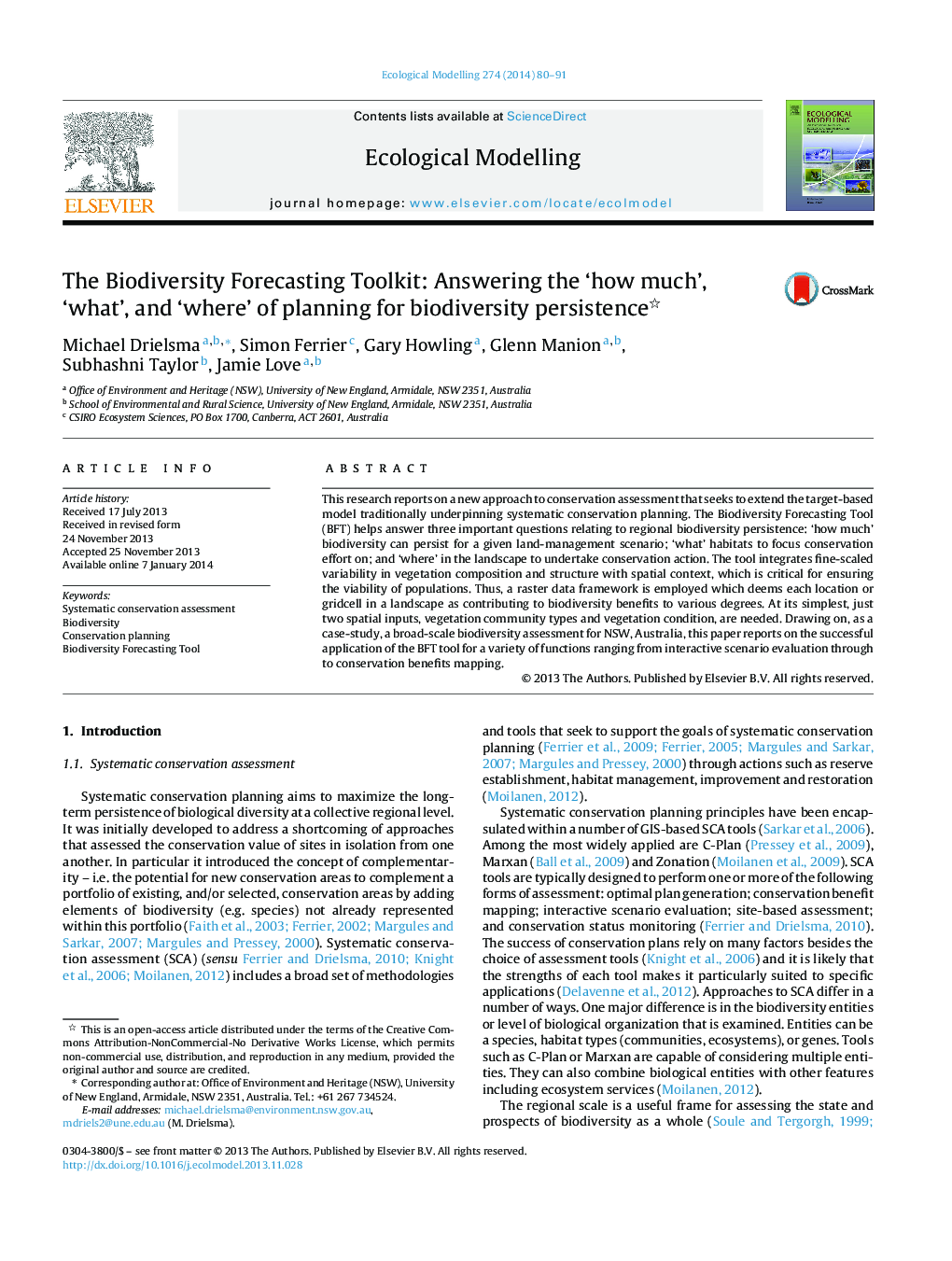| Article ID | Journal | Published Year | Pages | File Type |
|---|---|---|---|---|
| 6296975 | Ecological Modelling | 2014 | 12 Pages |
Abstract
This research reports on a new approach to conservation assessment that seeks to extend the target-based model traditionally underpinning systematic conservation planning. The Biodiversity Forecasting Tool (BFT) helps answer three important questions relating to regional biodiversity persistence: 'how much' biodiversity can persist for a given land-management scenario; 'what' habitats to focus conservation effort on; and 'where' in the landscape to undertake conservation action. The tool integrates fine-scaled variability in vegetation composition and structure with spatial context, which is critical for ensuring the viability of populations. Thus, a raster data framework is employed which deems each location or gridcell in a landscape as contributing to biodiversity benefits to various degrees. At its simplest, just two spatial inputs, vegetation community types and vegetation condition, are needed. Drawing on, as a case-study, a broad-scale biodiversity assessment for NSW, Australia, this paper reports on the successful application of the BFT tool for a variety of functions ranging from interactive scenario evaluation through to conservation benefits mapping.
Keywords
Related Topics
Life Sciences
Agricultural and Biological Sciences
Ecology, Evolution, Behavior and Systematics
Authors
Michael Drielsma, Simon Ferrier, Gary Howling, Glenn Manion, Subhashni Taylor, Jamie Love,
